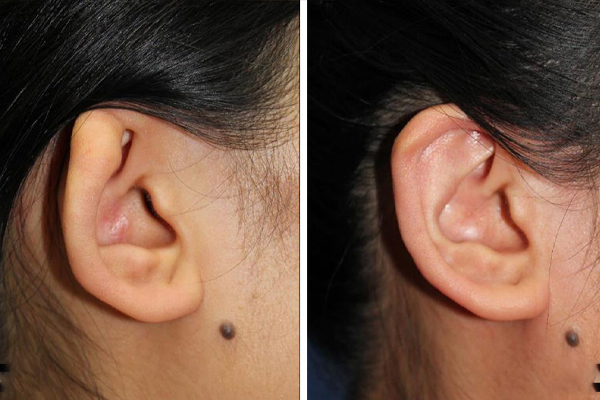Ear reconstruction
Ear reconstruction is a surgical procedure designed to rebuild or restore a missing or deformed ear. This can be necessary due to congenital conditions (like microtia), trauma, injury, or previous surgery complications.
Types of Ear Reconstruction
- Microtia Reconstruction
- Rebuilding a missing or underdeveloped ear, often using cartilage or other materials.
- Trauma-Related Ear Reconstruction
- Repairing and reconstructing an ear affected by injury or disease.
Benefits of Ear Reconstruction
- Restores the appearance and functionality of a missing or deformed ear.
- Improves facial symmetry and balance.
- Enhances self-confidence and emotional well-being.
- Can be combined with other reconstructive or cosmetic procedures for comprehensive facial restoration.
Procedure Overview
1. Microtia Reconstruction
- Initial Consultation:
- Detailed evaluation of the extent of ear deformity and the best approach for reconstruction.
- Cartilage Grafting:
- Cartilage is often harvested from other parts of the body (e.g., rib cartilage) to create a natural ear structure.
- Placement and Sculpting:
- Cartilage is shaped and placed to reconstruct the ear, with multiple stages for optimal results.
- Final Stage:
- Skin grafts or prosthetic materials may be used to cover and shape the ear.
2. Trauma-Related Ear Reconstruction
- Repair:
- Rebuilding the ear using skin flaps, cartilage grafts, or implants.
- Sculpting:
- Reshaping the ear to restore natural contours.
- Closure:
- Incisions are sutured with minimal scarring techniques.
Recovery Process
-
Microtia Reconstruction:
- Multiple stages of surgery with recovery times between each phase.
- Swelling and discomfort are expected during the healing process.
- Final results seen after 6-12 months as tissues integrate and settle.
-
Trauma-Related Ear Reconstruction:
- Recovery depends on the complexity of the reconstruction.
- Swelling, bruising, and discomfort are common for several weeks.
- Final outcomes visible after several months as healing progresses.
Ideal Candidates
- Individuals with congenital ear deformities (microtia).
- Those with trauma-induced ear deformities or loss.
- Healthy individuals seeking to restore ear function and appearance.
Risks and Complications
- Microtia Reconstruction:
- Potential for cartilage resorption or imperfect ear shape.
- Long-term need for follow-ups and minor adjustments.
- Trauma-Related Ear Reconstruction:
- Risk of infection, scarring, or uneven results.
- Nerve damage or temporary loss of sensation.
Cost Factors
- Complexity and extent of the ear reconstruction.
- Surgeon’s experience and geographic location.
- Additional costs for anesthesia, post-operative care, and follow-ups.



